I was fortunate enough to be in Birmingham recently, and while I was there I visited the Birmingham Museum and Art Gallery. I will be covering the museum itself in a later blog post for #MuseumMonday so please keep an eye out for that, however while I was there I was also able to visit a touring exhibition titled GIANTS. This exhibition was developed by the Royal Belgian Institute of Natural Sciences and is currently on tour in the UK. It’s debut in Birmingham began in August and has now come to an end, although GIANTS will be presented at the National Museum of Scotland in Edinburgh very soon. So what is this exhibition is all about? It assembles life-sized 3D reconstructions, near-complete fossil skeletons, immersive projections and some hands-on palaeontological activities to trace the natural history, functional morphology and extinction dynamics of the planet’s largest terrestrial, marine and freshwater animals from after the time of the dinosaurs, to the present.

GIANTS is a touring exhibition created by the Royal Belgian Institute of Natural Sciences and toured by Nomad Exhibitions, Birmingham hosted the UK premiere in 2025. The show occupied the Gas Hall and presents a chronological and thematic walk from the immediate post-Cretaceous world through Pleistocene faunas, the roster includes high-impact taxa: Titanoboa cerrejonensis, megalodon (Otodus megalodon), woolly mammoth (Mammuthus primigenius), Paraceratherium, Gigantopithecus blacki, sabre-toothed cat (Smilodon populator), giant ground sloth (Megatherium americanum) (giant ground sloth) and Livyatan melvillei, presented as life-sized 3D reconstructions coupled with “nearly complete” fossil skeletons and casts. The public messaging intentionally links past gigantism to contemporary conservation concerns (elephants, whales, rhinoceroses).
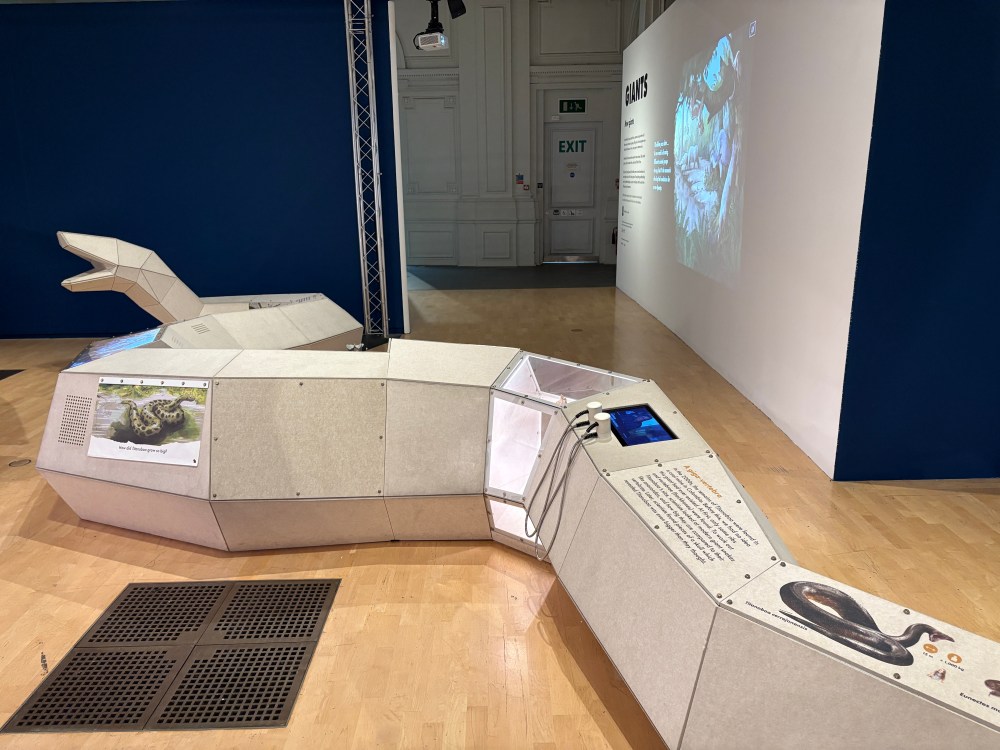
Titanoboa cerrejonensis was an enormous prehistoric snake that lived during the Paleocene epoch, roughly 60 million years ago, in what is now northern Colombia. Discovered in the Cerrejón coal mines, this species is estimated to have reached lengths of up to 13 metres (about 42 feet) and weighed over a ton, making it the largest snake known to have ever lived. Its immense size was likely supported by the warm, tropical climate of the time, which allowed cold-blooded reptiles to grow far larger than modern species. Titanoboa inhabited a lush, swamp-like rainforest environment filled with giant turtles, early crocodilians, and dense vegetation. Fossil evidence suggests that it was not just a colossal constrictor but may also have been partially aquatic, similar to modern anacondas. It likely preyed on large fish and other vertebrates, dominating its ecosystem as an apex predator. The discovery of Titanoboa has helped scientists better understand post-dinosaur recovery, ancient climates, and the evolutionary history of snakes. This is also the first species you come across on your journey through the exhibition.

Otodus megalodon, commonly called simply megalodon, was one of the largest and most powerful predators ever to live in Earth’s oceans. You have probably heard about this extinct shark that lived roughly 23 to 3.6 million years ago, during the Miocene and Pliocene epochs. Estimates based on fossilised teeth and vertebrae suggest that megalodon could reach lengths of 15–20 metres (50–65 feet), with a bite force far exceeding that of any modern shark. Its teeth (some over 18 centimetres long) are among the most iconic fossils in marine palaeontology and have been found across the world, indicating a wide geographic range. Megalodon occupied a top position in marine food webs, likely preying on large whales, seals, and other sizeable marine mammals. Its massive size and warm-water preference suggest it thrived in subtropical and temperate seas, where food was abundant. As ocean temperatures cooled toward the end of the Pliocene and whale populations shifted, megalodon likely struggled to maintain its ecological dominance. These environmental changes, combined with competition from emerging predators like early great white sharks (Carcharodon carcharias) and orcas (Orcinus orca), are believed to have contributed to its extinction. Despite its disappearance, megalodon remains a symbol of prehistoric ocean power and continues to fascinate both scientists and the public.
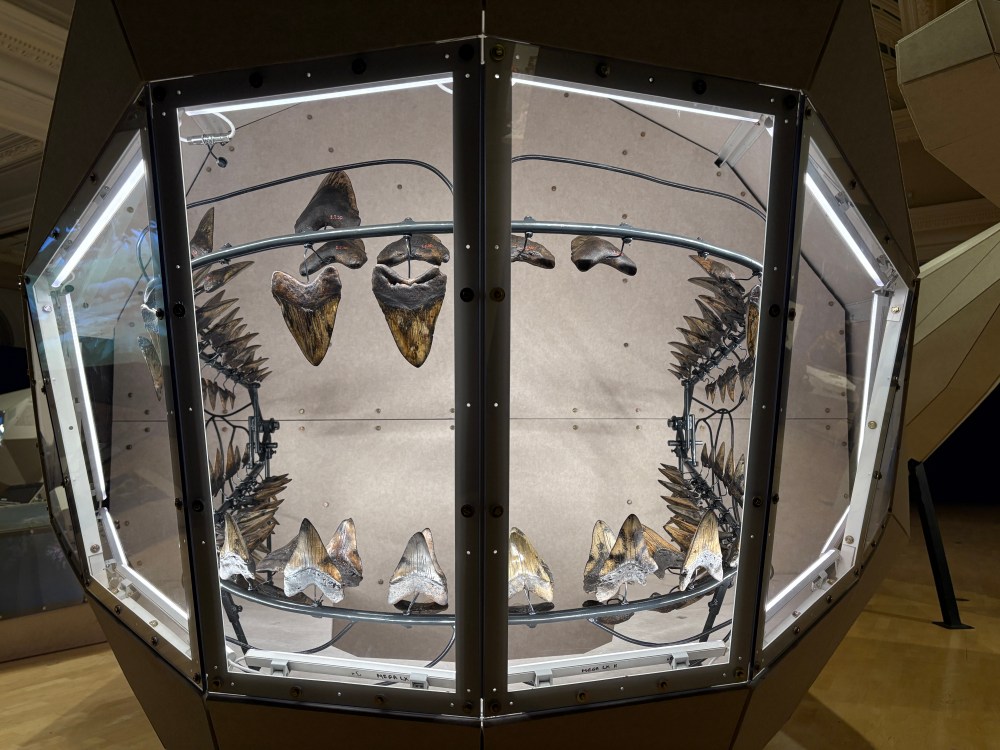
Paraceratherium was a giant hornless rhinoceros that lived during the Oligocene epoch, roughly 34–23 million years ago, across parts of what are now Asia and Eastern Europe. Considered one of the largest land mammals to ever exist, it stood about 4.5–5 metres (15–16 feet) at the shoulder and may have reached lengths of over 7 metres (23 feet). Estimates suggest it weighed between 15–20 tons, making it taller than a giraffe and heavier than modern elephants. Despite its massive size, Paraceratherium likely had a relatively lightweight, elongated skull and long limbs adapted for efficient movement across open woodlands and floodplains. Its diet consisted mainly of leaves, twigs, and soft vegetation, which it could reach using its long neck and flexible upper lip, similar to that of modern rhinos. As a high browser, Paraceratherium played an important ecological role in shaping vegetation structure in its environment. Fossil evidence suggests that it was widely distributed across Central Asia, indicating it could travel long distances in search of food. Although enormous and imposing, it likely faced few predators as an adult. Over time, climate shifts and changes in plant communities may have contributed to its decline and eventual extinction.
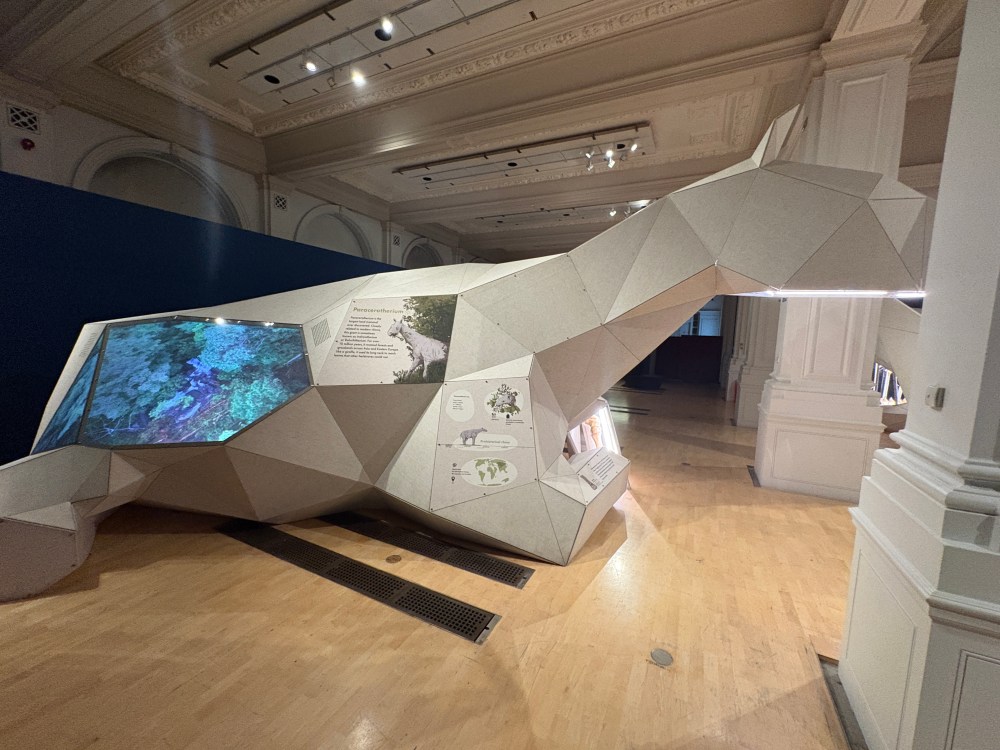
Megatherium americanum was a gigantic ground sloth that lived during the Pleistocene epoch, from about 2 million to 10,000 years ago, in what is now South America. Reaching lengths of up to 6 metres (20 feet) and weighing as much as 4 tons, it was one of the largest land mammals of its time. Unlike modern tree-dwelling sloths, Megatherium was a powerful, ground-dwelling herbivore with massive limbs and large curved claws. Its robust build allowed it to rear up on its hind legs, using its tail as a support tripod to reach higher vegetation, a strategy that helped it feed from trees and shrubs far beyond the reach of smaller herbivores. Despite its size, Megatherium was primarily a slow-moving browser, feeding on leaves, fruits, and other plant matter. Some researchers have proposed that it may also have occasionally scavenged, though this remains debated. Megatherium shared its environment with other megafauna such as glyptodonts, toxodonts, and early human populations. Its extinction around the end of the last Ice Age is often attributed to a combination of climate change and human hunting pressure. Today, Megatherium remains one of the most iconic representatives of South America’s prehistoric wildlife, illustrating how dramatically ecosystems have changed since the Pleistocene.
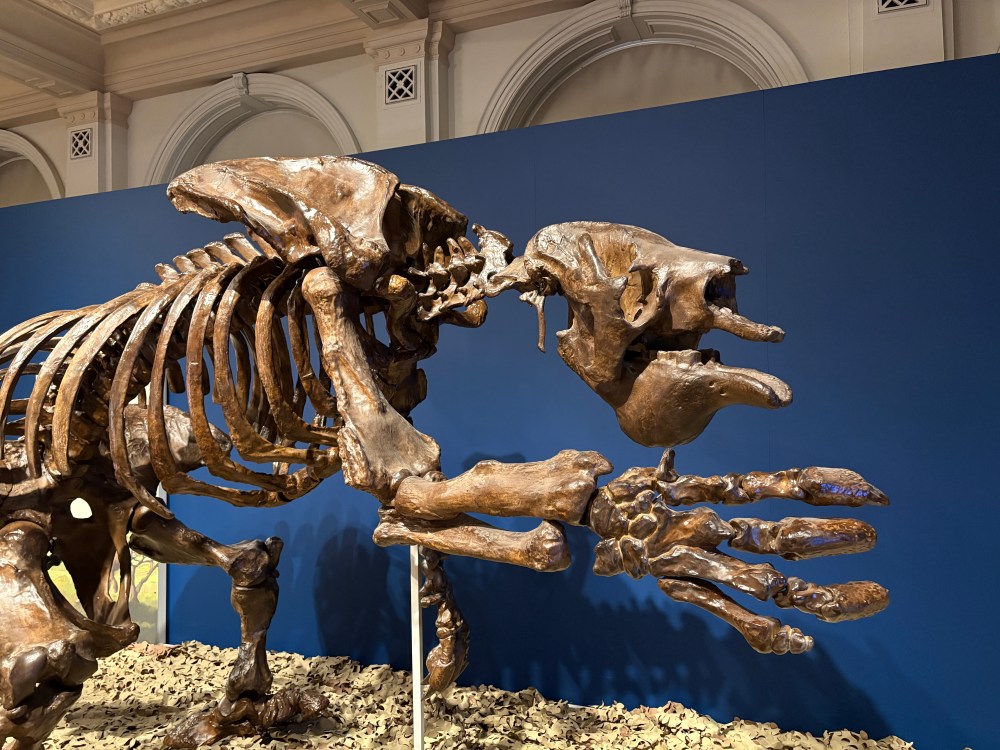
Moving on, Livyatan melvillei was a massive predatory sperm whale that lived during the Miocene epoch, roughly 12–13 million years ago, in the warm oceans that once covered regions such as present-day Peru. Named after both the biblical Leviathan and author Herman Melville (author of Moby Dick), Livyatan was built for power: estimates suggest it reached lengths of 13–17 metres (43–56 feet), rivalling the size of modern sperm whales (Physeter macrocephalus). Unlike modern sperm whales, which rely on suction feeding, Livyatan possessed enormous, functional teeth in both its upper and lower jaws (some measuring over 30 centimetres long) making them among the largest biting teeth ever found in any animal! This whale was an apex predator, occupying the same ecological niche as the giant shark Otodus megalodon who we met earlier. Its powerful jaws, robust skull, and sharp teeth indicate it hunted large marine mammals, including early whales and seals. Fossil evidence suggests a highly competitive marine ecosystem where top predators constantly fought for dominance. The extinction of Livyatan may have been linked to global cooling, shifts in prey populations, or competition from other large predators. Despite its disappearance, Livyatan melvillei remains one of the most dramatic examples of macropredation in Earth’s history, showcasing the intense evolutionary arms race of ancient oceans.

Next is a species I was pleasantly surprised to see at GIANTS. Gigantopithecus blacki was the largest known primate to have ever lived, inhabiting the forests of Southeast Asia during the Pleistocene epoch, roughly 2 million to 300,000 years ago. This massive ape is estimated to have stood up to 3 metres (10 feet) tall when upright and may have weighed between 300–500 kilograms (660–1,100 pounds), making it significantly larger than any living great ape. Fossil evidence, consisting mainly of teeth and jaw fragments found in traditional medicine shops in Hong Kong and China, reveals that Gigantopithecus had extremely robust jaws and large molars, adapted for processing tough, fibrous vegetation such as bamboo. Its size and dental structure suggest it was a ground-dwelling herbivore living in dense, subtropical forests. The decline and extinction of Gigantopithecus blacki are thought to be linked to environmental changes and habitat loss. As the climate cooled and forests receded during the Pleistocene, the species likely struggled to adapt to shrinking food sources and shifting ecosystems. Its large size would have required enormous amounts of plant material, making it particularly vulnerable to ecological disruptions. Additionally, increased competition with other herbivores and early human ancestors may have intensified these pressures. From an anthropology point of view, the species is also thought to have inspired the myths of yetis. Today, Gigantopithecus remains a fascinating example of primate evolution, offering insight into how climate and habitat changes can shape and ultimately end giant species.

Mammuthus primigenius, commonly known as the woolly mammoth, was one of the most iconic Ice Age mammals, if not the most iconic. It lived throughout the northern regions of Eurasia and North America during the late Pleistocene, thriving in cold, harsh environments dominated by mammoth steppe; a dry, grassy plain stretching across the northern hemisphere. Woolly mammoths were well adapted to frigid climates, they possessed a thick, shaggy coat, a dense underlayer of fur, a layer of insulating fat, and small ears and tails to reduce heat loss. Adults typically stood around 2.7–3.4 metres (9–11 feet) tall at the shoulder and could weigh up to 6 tons, making them comparable in size to modern African elephants (Loxodonta africana). These mammoths used their long, curved tusks for foraging through snow to reach grasses and sedges, as well as for defense and social interactions. They lived in herds and likely had complex social structures similar to modern elephants. Mammuthus primigenius went extinct around 4,000 years ago, with most populations disappearing earlier due to a combination of climate change and human hunting. A small, isolated population survived on Wrangel Island until its final extinction. The woolly mammoth remains a powerful symbol of the Ice Age and continues to captivate scientists and the public alike, especially as studies of preserved remains fuel ongoing discussions about genetics, de-extinction, and ancient ecosystems.
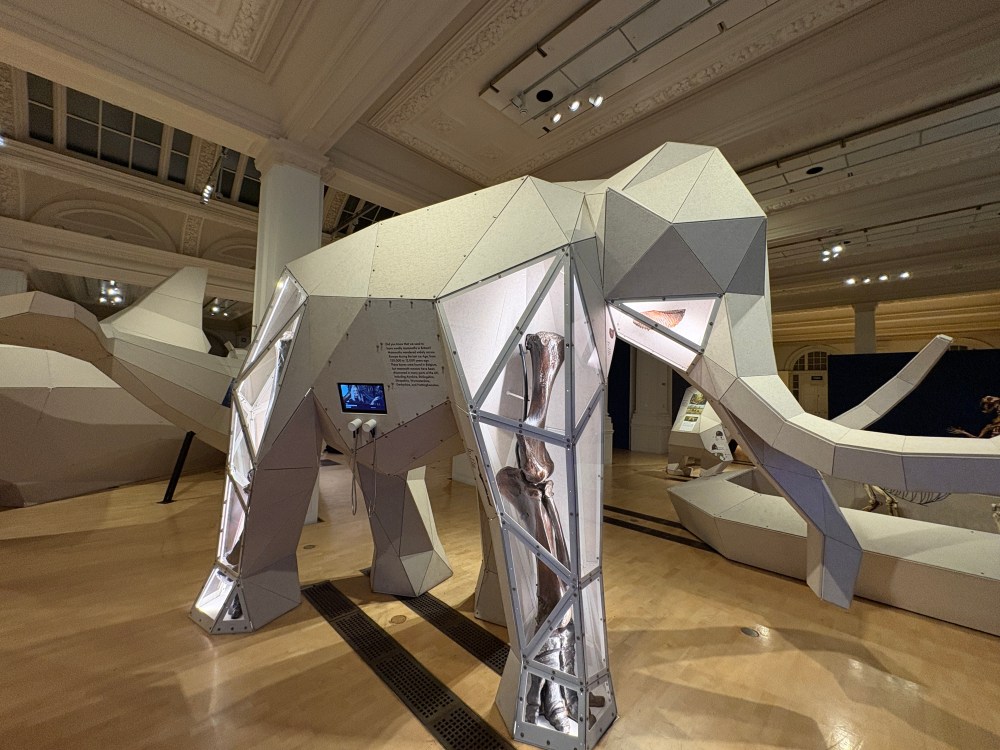
Smilodon populator was the largest and most robust species of the famous ‘sabre-toothed cats,’ living in South America during the late Pleistocene, roughly 1 million to 10,000 years ago. Significantly larger than its North American relative Smilodon fatalis, this predator could weigh up to 400 kilograms (880 pounds) and stood nearly 1.2 metres (4 feet) tall at the shoulder. Its defining features were its elongated upper canines, some reaching over 30 centimetres (12 inches), and its powerful forelimbs which were used to grapple and subdue large prey. Unlike modern big cats, Smilodon populator had a more stocky build, a shorter tail, and a wide gape that allowed it to deliver deep, precise killing bites. Living in open grasslands and mixed environments, Smilodon populator preyed on large South American megafauna such as giant ground sloths, young mastodons, and large camelids. Its hunting style likely relied on ambush rather than speed, using strength and agility to bring down prey in quick, violent encounters. The extinction of Smilodon populator coincided with major climatic shifts at the end of the last Ice Age, as well as the decline of the megafauna it depended on. Additionally, the arrival of humans in South America may have intensified ecological pressures. Despite its disappearance, this species remains one of the most iconic Ice Age predators, symbolising the unique and powerful wildlife that once dominated prehistoric landscapes. Seeing the skeleton (photographed below) they are a lot smaller than I thought they would be.

The final species in GIANTS is Panthera spelaea, commonly known as the Eurasian cave lion, which was a large predatory cat that roamed Europe and northern Asia during the late Pleistocene, roughly 300,000 to 15,000 years ago. Despite its name, it was not a cave-dweller. The term ‘cave lion’ comes from the fact that its remains (and those of its prey) were frequently found in caves. Larger than modern African lions (Panthera leo), Panthera spelaea males may have weighed up to 350 kilograms (770 pounds) and stood significantly taller at the shoulder. Cave art and frozen remains suggest that cave lions lacked a full mane and may have had faint body markings, giving them a sleeker appearance than today’s lions. As apex predators, cave lions hunted a variety of Ice Age animals, including reindeer, bison, horses, and young mammoths. Evidence from cave paintings and bone assemblages indicates they may have hunted cooperatively, similar to modern lions, although this remains debated. Their extinction is often linked to the combined effects of climate warming at the end of the Pleistocene (leading to shrinking steppe habitats) and declining prey populations. Human encroachment and hunting pressure may have also played a role.

Okay, so that is a quick whistlestop tour of the nine species on display. Reflecting on these, one of the exhibition’s greatest communicative achievements is scale. Seeing a life-size Paraceratherium or an articulated Mammuthus primigenius at the scale intended conveys the mechanical and ecological constraints of gigantism in a way that figures and small museum mounts rarely can. For students of biomechanics, this is an immediate, intuitive lesson, enabling hypotheses about locomotion, weight-bearing and feeding strategies to be formulated on the spot. Rather than presenting a parade of large taxa as curiosities, GIANTS situates them in ecosystems and temporal frameworks, Palaeocene rainforests for Titanoboa, Miocene−Pliocene oceans for Otodus megalodon, Pleistocene steppe-tundra for Mammuthus primigenius. For scientists, the emphasis on palaeoenvironmental reconstruction (climate, community composition, trophic interactions) is welcome, it reduces the risk that visitors interpret gigantism as an isolated oddity and encourages thinking about drivers (resource availability, predator–prey arms races, thermal physics) and constraints (reproductive rate, habitat fragmentations).

The provenance of GIANTS matters. The Royal Belgian Institute is an established natural history research museum, so the exhibition reflects institutional palaeobiological expertise and access to high-quality casts and specimens. Nomad Exhibitions’ touring model explains the emphasis on durable 3D models and modular interactives that travel easily. For scientists and enthusiasts, this has two practical implications: (1) reconstructions will generally echo contemporary peer-reviewed understandings where consensus exists; (2) certain interpretive choices (posture, integument, soft-tissue reconstructions) reflect curatorial synthesis rather than new primary data. The combination of immersive projections, tactile interactives, object handling (special events), and textual panels supports multiple learning pathways. For those interested in public engagement, this is a model for translating technical content into accessible, evidence-based experiences while preserving nuance. The exhibit purposefully and responsibly draws a line between extinct giants (e.g., Megatherium, Mammuthus) and extant threatened large animals (elephants, whales, rhinos). This helps contextualise extinction as an ongoing process with human drivers, a necessary framing in modern natural history communication. The messaging links palaeontological knowledge to modern conservation biology without over-simplifying causal chains, which is appropriate for multi-audience exhibits. It also demonstrates how we can learn from the past in order to avert catastrophe in the present day.

From a visitor perspective, large 3D reconstructions are usually visually convincing but inherently speculative in aspects such as integument, colouration, display structures and some soft-tissue reconstructions. For taxa like Gigantopithecus or Paraceratherium, the fossil record provides solid osteological anchors, but soft-tissue inferences depend heavily on phylogenetic bracketing and functional analogy. The exhibition gets around these with their design of the extinct species being a little more square than they would be in life, constructed of painted wooden panels which helps to work around these uncertainties. The exhibition text largely stays consistent with its own labels, but additional curatorial notes for those intrigued by taxonomic history would be valuable. The exhibitions central theme is size (understandably given the title) but size alone is an incomplete explanatory variable. Life history traits (growth rates, age at maturity, reproductive output, juvenile mortality) critically determine population dynamics and extinction vulnerability. The exhibition touches on these points in broader strokes (e.g. vulnerability of large vertebrates) but does not provide quantitative comparisons (e.g. generation times of mammoths vs. megafaunal competitors; estimated population densities). Including accessible graphical summaries (log-scaled body mass vs. expected population density, or simple allometric scaling plots) would deepen scientific understanding without alienating lay visitors. This is an important consideration given the hypotheses surrounding the overhunting of these large animals by humans.

Fossils are products of complex taphonomic histories. While the exhibit references origins (e.g. Titanoboa from Cerrejón coal mine, Colombia) in broad terms, it would benefit from more explicit geological context: the dating methods, depositional environments, and preservation biases that affect what we know about ‘giant’ taxa. I wonder if a comparable exhibition for the tiny species is even possible given preservation bias. For scientists and students this framing is vital: absence of evidence is not evidence of absence, and recovery bias (e.g. larger bones are more likely to fossilise and be collected) can skew perceptions of past faunal composition. The exhibition could benefit from a dedicated module or signage to modern analytical tools (isotopes, FEA, CT scans), using one or two taxa as worked examples and summarising assumptions and margins of error, to help visitors understand how we know what we know about the species featured. Additionally, I would have like to have seen a curated reading list with key primary literature and recent reviews for each major taxon, including suggested entry points for non-specialists and primary research references for students available, given that there is no book accompanying GIANTS. A PDF available by a QR code would suffice but evidence is increasingly important with such exhibitions.

GIANTS operates at an important intersection: it is both spectacle and primer. For scientific outreach, the show’s biggest value is its capacity to attract non-specialist audiences into conversations that have direct scientific relevance (extinction dynamics, palaeoclimate proxies, and functional morphology). The conservation framing leverages paleobiology to motivate contemporary action, a strategy that works because it connects deep time to present-day biodiversity crises. GIANTS at Birmingham Museum & Art Gallery was an ambitious, largely successful synthesis of palaeontology, biomechanics and conservation messaging packaged for the public. For scientists, it is both a useful outreach exemplar and a reminder of the pedagogical responsibilities that accompany vivid reconstructions. The exhibition hit high marks for visual impact, hands-on methodology education, and linkage to modern conservation crises. It could be strengthened by more explicit presentation of scientific uncertainty, deeper geological/taphonomic context, and inclusion of compact, peer-referenced technical notes accessible to interested audiences. When it is on the road, make sure you go and visit it!
If you liked this post and enjoy reading this blog, please consider supporting me on Patreon where you will also gain access to exclusive content. If you enjoy reading my blog, why not subscribe using the form below?






